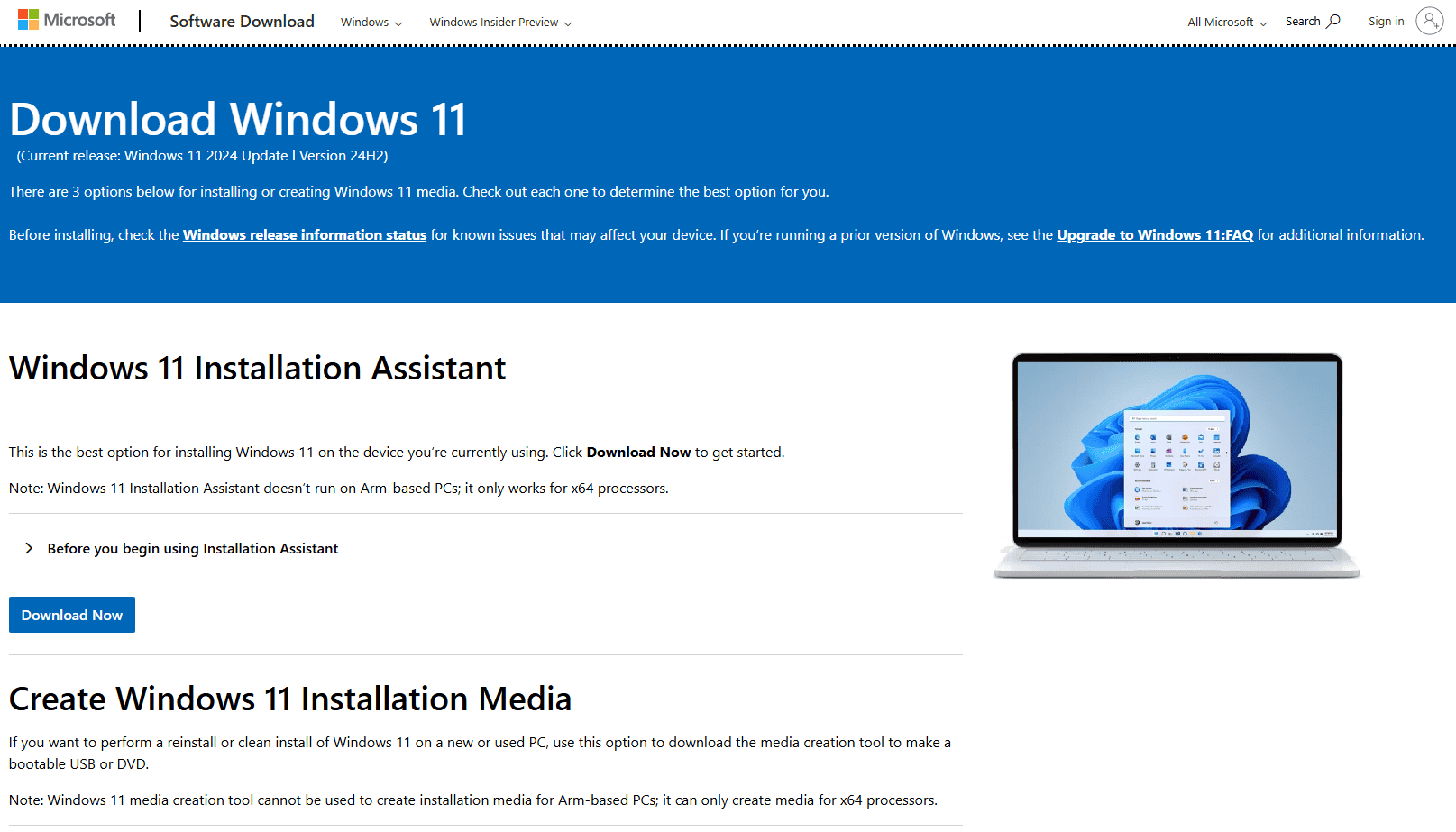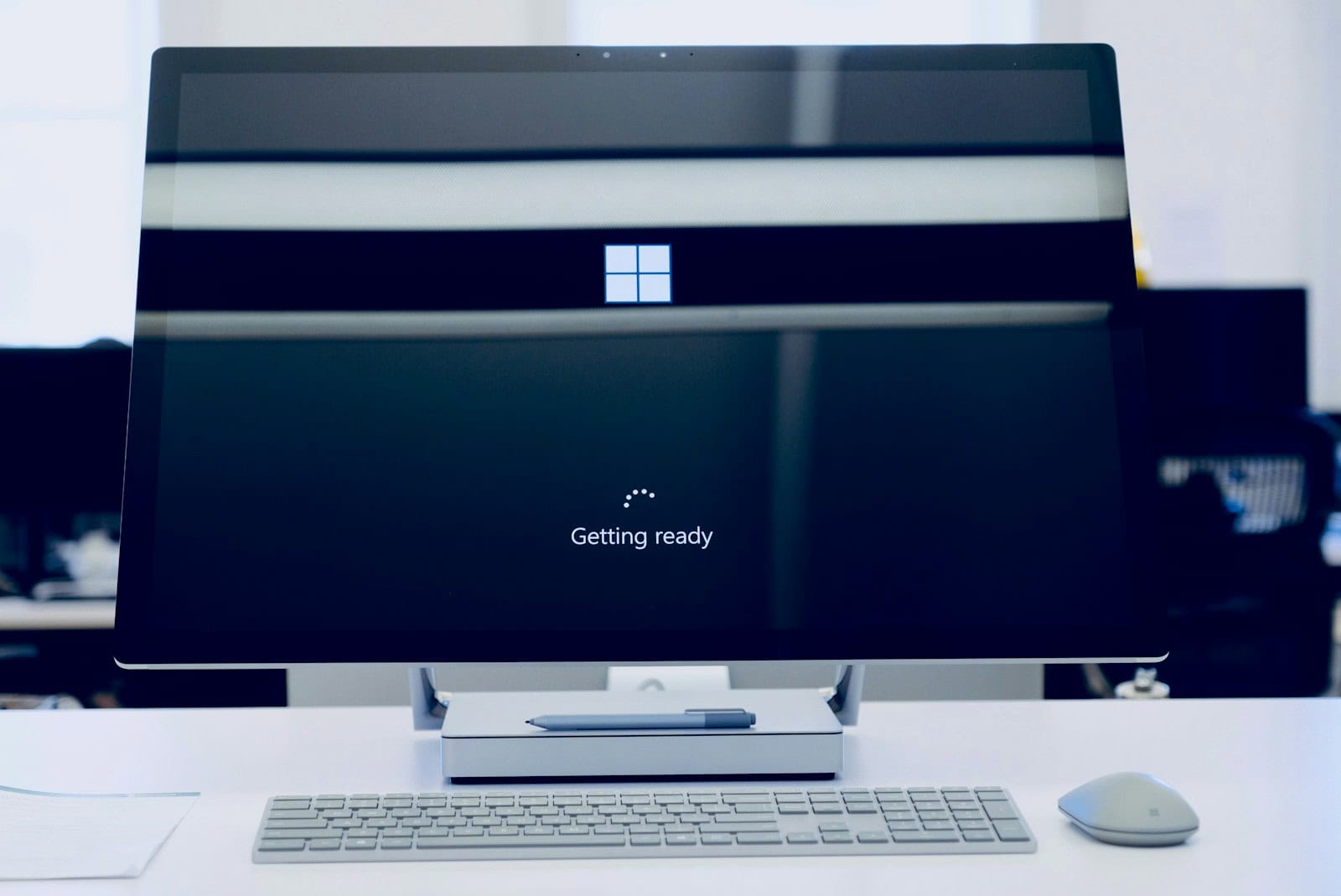Windows 11 has been rolling out steady improvements since its debut, but recent updates—especially in 2025—have stirred up a wave of problems for both everyday users and IT professionals. From missing icons to full-on system crashes, the latest update cycle has been anything but smooth.
The 24H2 Update Woes: Blue Screens, Bricked Devices & More
One of the most disruptive updates in recent memory is Windows 11 version 24H2. Specifically, update KB5043145 has been linked to critical failures such as the blue screen of death (BSOD) and in rare cases, even “bricking” devices—rendering them completely unusable. Multiple users have taken to Reddit, Microsoft forums, and social media to report black screens, corrupted boot sectors, and non-functional system restore points after installing this update.

Enterprise Environments Are Not Immune
It’s not just personal users facing these headaches. Businesses and IT departments are encountering their own brand of trouble. After recent cumulative updates, admins have flagged issues with:
- Domain join operations failing, even with correct credentials.
- Group policy errors, especially involving printer and networking deployments.
- WSUS (Windows Server Update Services) stalling mid-update, breaking automated rollouts.
Microsoft has acknowledged many of these in their [known issues logs], but fixes are rolling out slowly or remain under investigation.
Notable Update-Specific Issues
🔹 Remote Desktop Breaks After KB5050094
A preview update from January 2025 broke Remote Desktop Protocol (RDP) sessions, causing disconnections for users relying on remote access. Microsoft resolved this with the March 27, 2025 patch (KB5053656), but users had to wait nearly two months for a proper fix.
🔹 Copilot App Disappears
The March 2025 Patch Tuesday rollout accidentally removed the Windows Copilot app, a key feature for many users. Those affected had to manually reinstall it from the Microsoft Store and re-pin it to their taskbar—an ironic misstep for a tool designed to help users troubleshoot problems.
🔹 Lenovo BIOS Update Blocked
Owners of Lenovo ThinkPad laptops discovered they couldn’t install BIOS updates after installing a recent Windows patch. Lenovo eventually released BIOS version 1.61 to resolve the conflict, but only after reports mounted of bricked firmware and failed recovery attempts.
🔹 Gaming Performance Hit
Gamers also got the short end of the stick. The 24H2 update caused major issues for titles like Star Wars Outlaws and Avatar: Frontiers of Pandora, both published by Ubisoft. Players experienced crashes, long load times, and launch failures. In response, Microsoft paused the update rollout for systems with these games installed to prevent further problems.
What You Can Do Right Now
If you’re facing any of these issues—or want to avoid them—here are practical steps you can take:
✅ Use the Built-In Troubleshooters
Navigate to: Settings > System > Troubleshoot > Other troubleshooters Run the “Windows Update” troubleshooter and others relevant to your symptoms.
✅ Roll Back the Update
If a recent update is causing problems:
- Go to Settings > Windows Update > Update History
- Select Uninstall updates
- Remove the problematic patch (e.g., KB5043145)
✅ Pause Updates Temporarily
To avoid untested updates:
- Go to Settings > Windows Update
- Select Pause updates for 1 week (or more under “Advanced Options”)
✅ Update Drivers Manually
Sometimes it’s not the OS, but out-of-date drivers that fail after an update.
- Visit your device manufacturer’s website
- Download the latest graphics, chipset, BIOS, and peripheral drivers
✅ Backup Before Updates
Going forward, always create a restore point or a full system image before major updates. You can do this using:
- Control Panel > System and Security > File History > System Image Backup
Stay Informed, Stay Updated (Cautiously)
Microsoft is aware of many of these issues and is working on fixes, but transparency and communication lag behind. Third-party forums and enthusiast communities often surface workarounds before official fixes are published.
If you’re an IT administrator, it’s worth delaying new updates using group policy or WSUS settings until a patch has been thoroughly tested by others. For personal users, regularly checking changelogs and setting update schedules wisely is your best line of defense.
Windows 11 has a lot of potential—but these recent missteps show that cautious adoption and proactive system management are more important than ever.
Key Takeaways
- Recent Windows 11 updates, especially version 24H2 and KB5043145, are causing widespread issues from desktop glitches to complete system failures.
- Both personal users and businesses are affected, with problems including missing icons, application crashes, and domain join failures.
- Microsoft’s troubleshooting tools and driver updates may help resolve some update-related problems while more comprehensive fixes are developed.
Understanding Windows 11 Update Mechanisms
Windows 11 update systems work through a structured approach that balances security needs with user experience. Microsoft delivers these updates through scheduled cycles and maintains repositories where users can manually download specific patches.
Patch Tuesday and Update Rollouts
Microsoft releases most Windows 11 updates on the second Tuesday of each month, commonly known as “Patch Tuesday.” This predictable schedule helps IT departments plan for implementation and troubleshooting time.
Updates come in different categories. Security updates address vulnerabilities and are often the most urgent. Feature updates bring new functionality and improvements to the operating system. Quality updates fix bugs and improve system stability without adding new features.
Windows 11 uses a phased rollout approach. Microsoft first releases updates to devices least likely to experience problems, then gradually expands to more systems. This helps identify potential issues before they affect all users.
Users can pause updates temporarily through Settings > Windows Update > Pause updates. This option provides a 7-day delay, helpful when troubleshooting problems.
The Role of the Update Catalog
The Microsoft Update Catalog serves as a centralized repository where users can manually download specific Windows 11 updates. This resource is particularly valuable when automatic updates fail or when specific patches are needed.
IT professionals often use the Update Catalog to test patches in controlled environments before company-wide deployment. The catalog provides detailed information about each update, including which security issues it addresses and what changes it makes to the system.
To access it, users can visit catalog.update.microsoft.com through any web browser. Updates can be searched by KB number (Knowledge Base identifier) or descriptive terms.
The catalog also offers cumulative updates that bundle multiple fixes together, reducing the need to install several individual patches. These packages help maintain system security while minimizing disruption.
Common Windows 11 Update Issues and Resolutions
Windows 11 users often encounter specific update problems that can disrupt productivity. These issues range from system crashes to compatibility problems with security patches and feature updates.
Resolving the Blue Screen of Death (BSOD)
The Blue Screen of Death remains one of the most frustrating Windows 11 update issues. This error typically appears when a critical system component fails during or after an update installation.
Common BSOD Causes:
- Driver incompatibility
- Corrupted system files
- Hardware conflicts
- Memory issues
To resolve BSOD issues, users should first boot into Safe Mode by pressing F8 during startup. Once in Safe Mode, running the System File Checker can fix corrupted files:
sfc /scannow
If driver issues are suspected, users can use Device Manager to roll back recent driver updates. For persistent problems, the Windows Update Troubleshooter (found in Settings > System > Troubleshoot) can identify and fix underlying issues.
Troubleshooting Security Update KB5053598
The KB5053598 security update has caused significant issues for many Windows 11 users, particularly affecting system stability and application performance.
Common KB5053598 Issues:
- System slowdowns
- Application crashes
- Network connectivity problems
- Printer malfunctions
To resolve these issues, users can uninstall the problematic update by going to Settings > Windows Update > Update History > Uninstall Updates. Select KB5053598 from the list and click “Uninstall.”
For users who need the security benefits without the problems, Microsoft has released a patch that addresses many of the issues. Checking for updates after uninstalling KB5053598 will often install the patched version.
Mitigating Issues with the 24H2 Update
The Windows 11 24H2 update introduces significant changes that have resulted in compatibility issues for some users and systems.
Common 24H2 Problems:
- Installation failures
- Performance degradation
- Compatibility issues with older hardware
- Missing features or functionality
Users experiencing installation failures should ensure their device meets all system requirements for 24H2. Microsoft has placed compatibility holds on some devices, which can be checked in Windows Update settings.
For those experiencing performance issues after successful installation, clearing temporary files can help. Use Disk Cleanup (right-click C: drive > Properties > Disk Cleanup) to remove unnecessary files.
If problems persist, rolling back to the previous Windows version is possible within 10 days of updating. Navigate to Settings > System > Recovery > Go back to find this option.
Advanced Troubleshooting Techniques
When standard fixes don’t resolve Windows 11 update problems, more technical approaches can help. These methods target the underlying system components that often cause update failures.
Using Administrative Command Prompt
The Command Prompt with administrator privileges provides powerful tools to fix stubborn update issues. To access it, right-click the Start button and select “Windows Terminal (Admin).”
To reset the Windows Update components, type these commands in sequence:
net stop wuauserv
net stop cryptSvc
net stop bits
net stop msiserver
After stopping these services, navigate to the SoftwareDistribution folder with:
cd %systemroot%\SoftwareDistribution
ren SoftwareDistribution SoftwareDistribution.old
Then restart the services:
net start wuauserv
net start cryptSvc
net start bits
net start msiserver
The DISM tool can repair Windows image files by running:
DISM /Online /Cleanup-Image /RestoreHealth
Follow this with the System File Checker:
sfc /scannow
Navigating the Device Manager
Device Manager helps identify hardware conflicts that block Windows updates. Press Win+X and select “Device Manager” from the menu.
Look for devices with yellow warning triangles, which indicate driver problems. Right-click these devices and select “Update driver” to search for newer versions.
For persistent issues, try uninstalling problematic devices completely. Right-click the device and select “Uninstall device.” Check the box to delete driver software if available. After restarting your computer, Windows will attempt to reinstall the correct drivers.
Some updates fail because of incompatible hardware. Check the manufacturer’s website for firmware updates that improve Windows 11 compatibility.
Managing Citrix Components
Citrix software can sometimes conflict with Windows updates, especially in business environments. If your system uses Citrix, try temporarily disabling it before updating.
Open Task Manager by pressing Ctrl+Shift+Esc. Navigate to the Startup tab and disable any Citrix-related applications before restarting your computer.
For persistent conflicts, consider uninstalling Citrix components temporarily:
- Open Settings > Apps > Installed apps
- Search for “Citrix”
- Uninstall relevant components
- Run Windows Update
- Reinstall Citrix afterward
In corporate environments, consult with IT before making changes to Citrix. They may have specific workarounds for your organization’s setup or need to apply updates through their management system.
Frequently Asked Questions
Windows 11 updates can sometimes create unexpected issues for users. Below are common questions and solutions to help troubleshoot and resolve update-related problems.
What are the common problems encountered after installing the latest Windows 11 update?
Many users report cursor functionality issues after recent Windows 11 updates. The cursor may appear on screen but become unresponsive or work intermittently.
System slowdowns are another frequent complaint, with computers becoming almost unusable after updating. This often manifests as lag when opening applications or performing basic tasks.
Some applications may be uninstalled during the update process. Microsoft notes this happens with apps known to cause upgrade problems, though they can be reinstalled afterward.
How can I troubleshoot errors during the Windows 11 update installation process?
Running the Windows Update troubleshooter is the recommended first step. This built-in tool can automatically detect and fix common update issues.
Verify your device is properly plugged in and connected to the internet. Unstable power or internet connections are common causes of failed updates.
Checking for adequate storage space is crucial. Windows updates require sufficient free disk space to download and install properly.
Disabling third-party security software temporarily can help, as some security programs may interfere with the update process.
What steps should I follow if my USB devices stop working post-Windows 11 update?
Unplug all USB devices and restart your computer. After rebooting, reconnect devices one by one to identify any problematic connections.
Update device drivers by visiting Device Manager. Right-click on each USB device and select “Update driver” to install the latest compatible versions.
Check Windows Update for additional driver updates. Sometimes Microsoft releases fixes for USB compatibility issues through regular updates.
Try different USB ports on your computer. Some ports may function correctly while others experience issues after the update.
What are the best practices for using Windows Update Assistant to avoid update issues in Windows 11?
Create a system restore point before using Windows Update Assistant. This provides a safety net to revert changes if problems occur.
Close all running applications before starting the update process. Active programs can interfere with updates and cause installation failures.
Disconnect unnecessary peripheral devices before updating. This reduces potential driver conflicts during the update process.
Ensure your device meets the minimum system requirements for Windows 11. The Update Assistant works best on compatible hardware.
How can I resolve update compatibility issues with the Windows 11 version 23H2?
Check the Windows Release Health dashboard for known issues with version 23H2. Microsoft regularly updates this resource with compatibility information.
Use the PC Health Check app to verify your system meets all requirements for the 23H2 update. Incompatible hardware may need upgrades.
Update all device drivers before attempting the 23H2 installation. Outdated drivers are a common source of compatibility problems.
Consider using the Windows Update settings to defer feature updates if you’re experiencing persistent issues. This gives Microsoft time to resolve problems.
What are the known Windows 11 update issues reported in 2025 and their potential fixes?
The March 2025 cumulative update has caused display driver conflicts on systems with certain graphics cards. Installing updated GPU drivers from manufacturer websites resolves most cases.
Memory leaks affecting system performance have been reported after recent security patches. Restarting affected computers regularly can temporarily alleviate symptoms until Microsoft releases a fix.
Some users experience Wi-Fi connectivity problems after updating. Resetting network settings through Control Panel often resolves these connection issues.
Audio driver compatibility issues have emerged on specific laptop models. Reinstalling audio drivers from the computer manufacturer’s support website typically fixes these problems.







